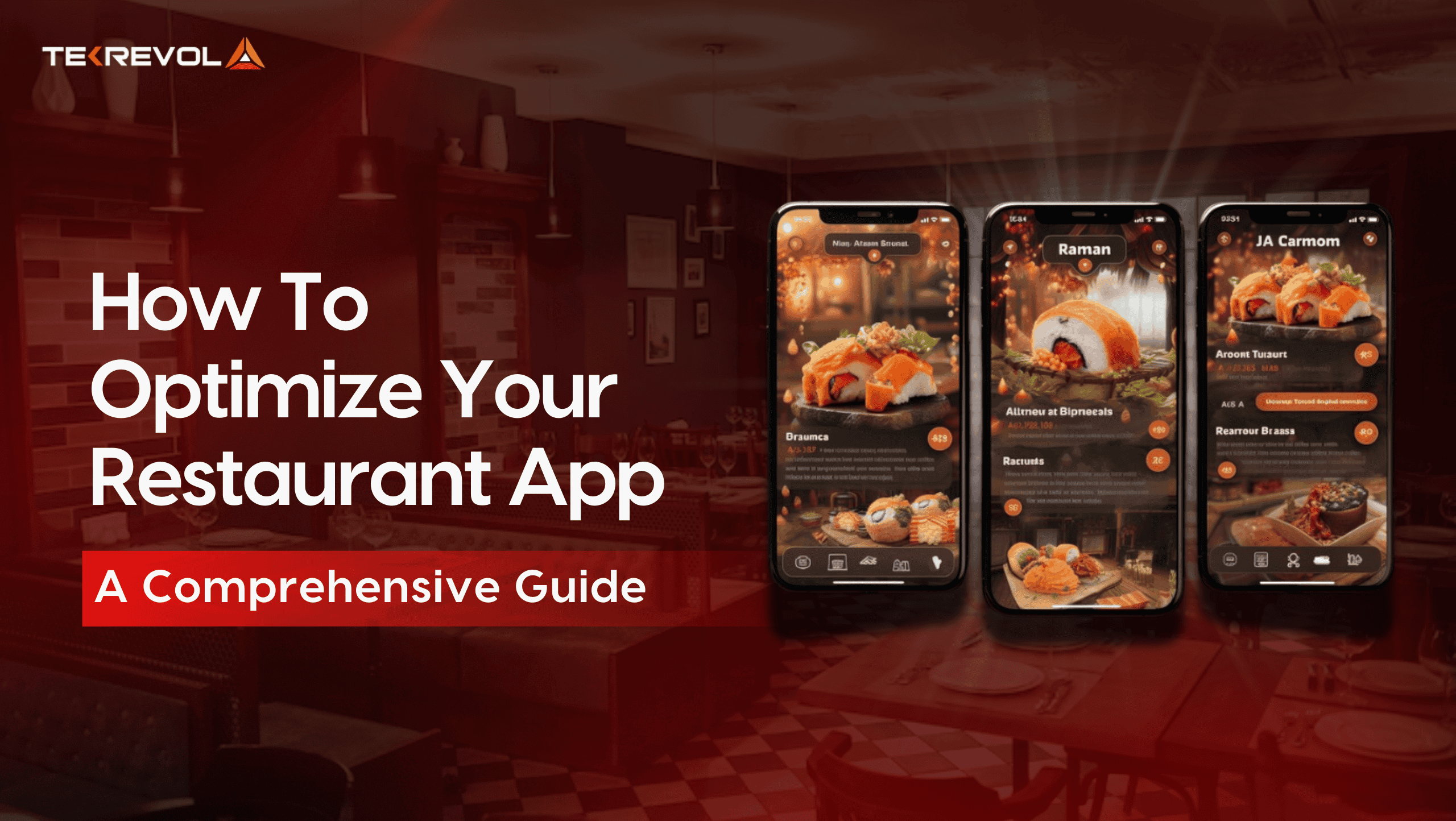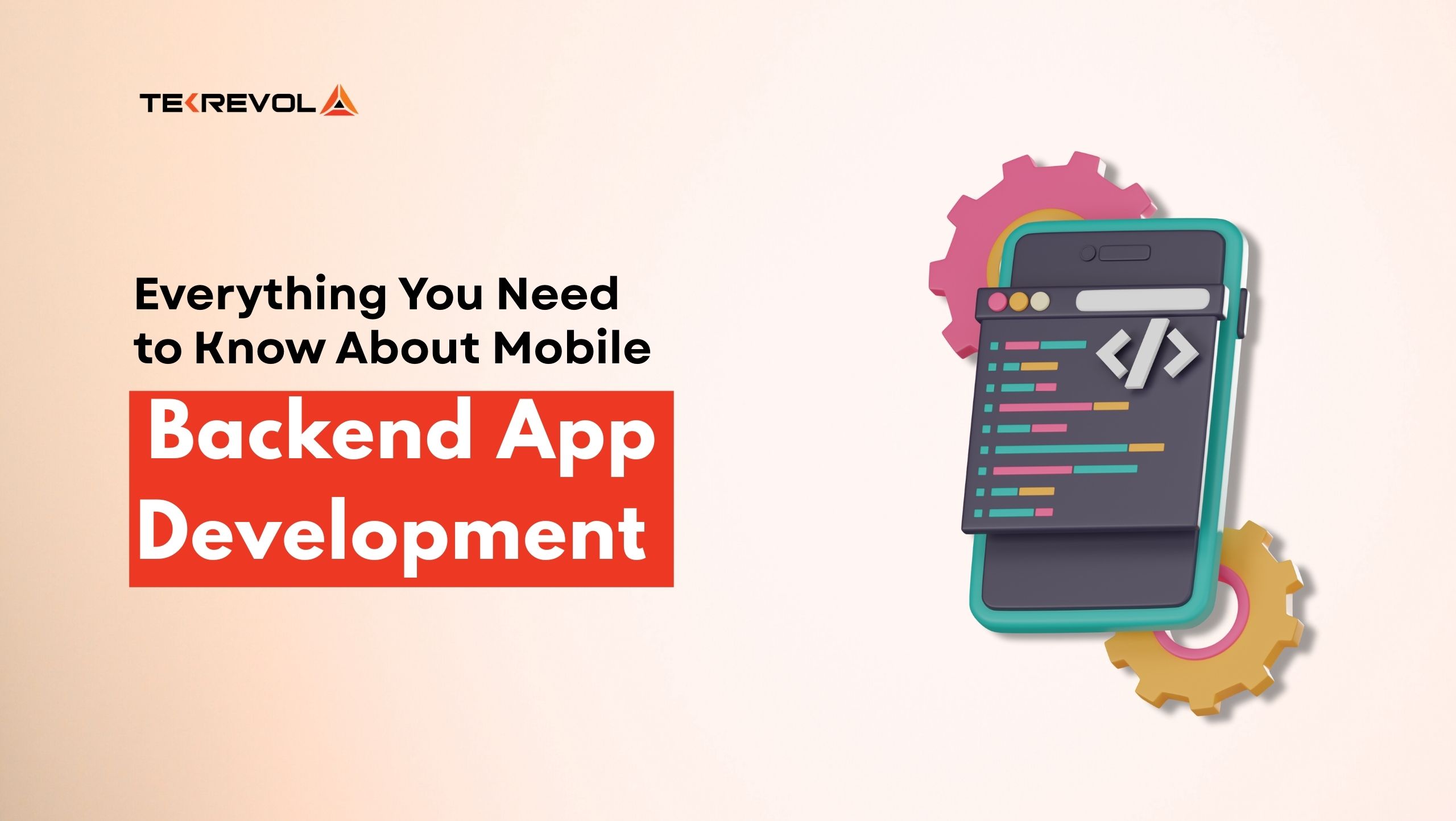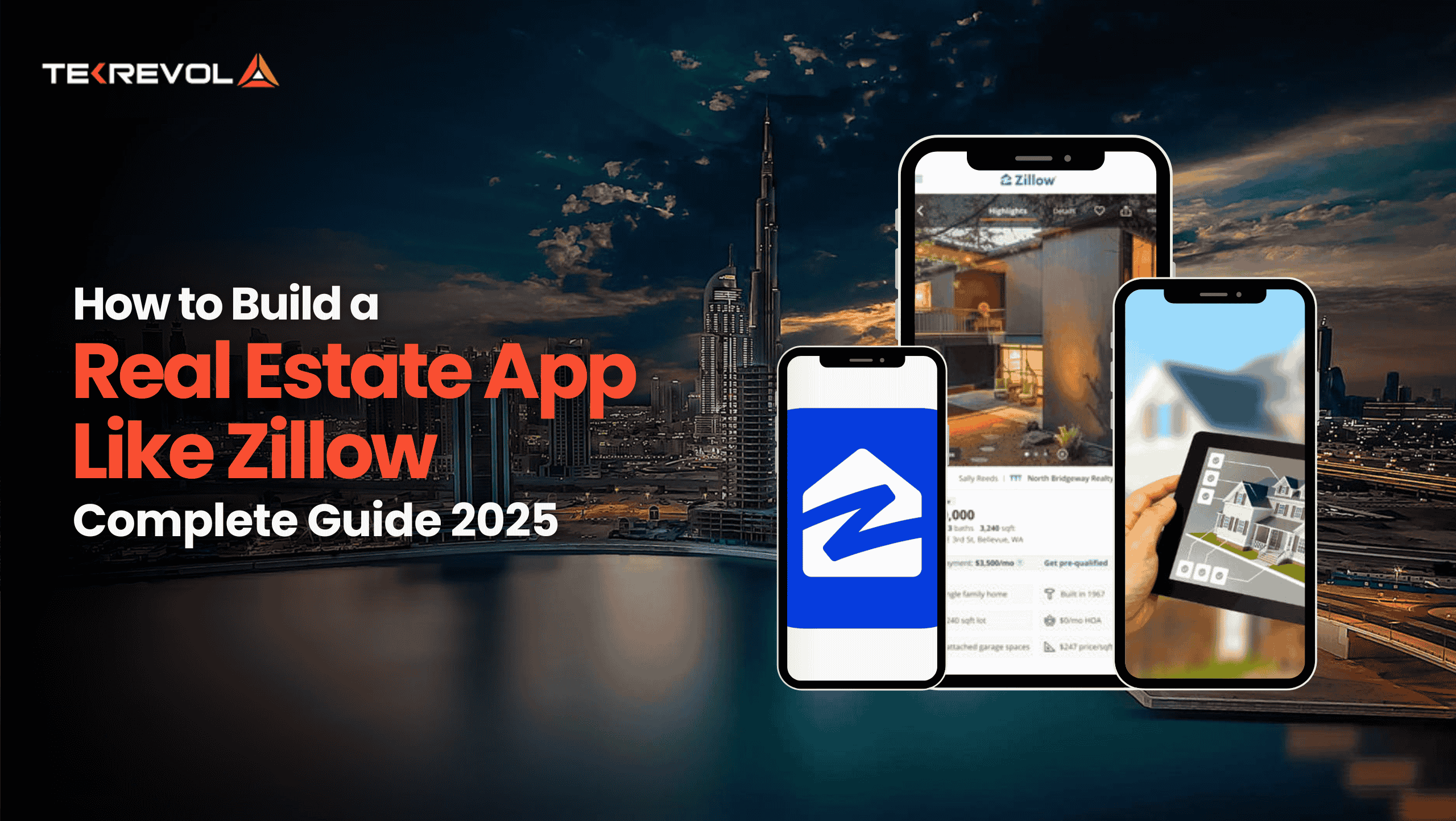We know restaurant owners face challenges in staying competitive, especially with growing customer demands. Despite having an app, many struggle to fully leverage its potential to meet these demands.
But here’s the question: Is your app not driving your desired results? Are you seeing the increased orders and customer loyalty that you expected, or is there room for improvement?
The days of traditional reservations are fading fast. App optimization in a highly competitive market involves refining the user experience, integrating cutting-edge features, and guaranteeing flawless functionality.
Statistics show that mobile apps can boost order frequency by 30%, and 80% of customers say they’re more likely to return to a restaurant with a user-friendly app.
If you want to develop a restaurant app and optimize it to drive more orders, this blog will help you. We’ll break down the key features and strategies to enhance the user experience and revenue.
So, let’s get started!
Top Features That Every Modern Restaurant App Should Have
Whether you’re running a small café or a large-scale chain, the right app features can make all the difference. In case you are thinking of creating a Food delivery app or restaurant app, here we have mentioned some important features and ways that will help you make the right choice for the success of your business.
1. Order Ahead for Pickup
Several restaurants have resorted to an option by which customers can order in advance and collect the meals at an off-site venue to avoid long queues. It not only increases the convenience of clients but also alleviates traffic congestion and optimizes the flow of procedures.
For instance, Starbucks has set up a capability in their mobile application where an individual can actually order their preferred beverage ahead and pick it up once they reach that location.
2. Loyalty Rewards
Customer loyalty programs are one of the most effective strategies for retaining customers. Promotions such as points for each purchase, and discounts for every purchased item can increase sales.
For instance, a customer might receive points for each coffee consumed, the points can be exchanged for products once the required threshold has been met. This incentive helps the customers download and use the app continually, thus developing a strong bond with the brand.
3. Easy In-App Payments
One of the main convenience goals is the ability to pay within the app. Customers are relieved of the burden of searching for the right cash or card in their wallets since the payment details are stored in the application.
For instance, a restaurant may provide customers with the opportunity to pay for their order using their mobile wallet, Apple Pay, or Google Pay, among others to allow clients to effect the payment easily.
4. Integrated Marketing Channels
The ideal restaurant app connects with several marketing platforms to provide a seamless experience to the consumers. For example, McDonald’s ties up its loyalty system with its application so that clients may be rewarded no matter if they are ordering from the drive-through, cashier, or delivery services.
Regardless of how the customer chooses the food order, the customer is still rewarded the same loyalty points as well as the same discount offer.
5. Location-Based Offers
People who have signed up for location-based services can receive personalized offers from restaurants once located nearby. For instance, Domino’s Pizza uses geolocation services to prompt users with the type of notifications involving specials within the vicinity of Domino’s stores.
If the customer is within range and has the application running, then you can make him offer a coupon code through which to get a pizza at a cheaper price and make an order for delivery.
6. Music and Entertainment Integration
Currently, most restaurants have introduced music streaming services on their apps to ensure customers are entertained while waiting for their orders. For instance, Customers can use the Hard Rock Café app to order, make reservations, and listen to curated music from their record library.
Furthermore, customers can also vote for the songs they would like to be played for them, making it quite interactive.
7. Customized Menus
The strategic menu does not simply list the items. Build unique menus that would satisfy everyday customers and newcomers which include upsell, combo offers, and simple structures. It also serves to boost your basket sales while at the same time helping to ensure that your menu is neither repetitive nor boring.
Example: A pizza restaurant can develop a “Create Your Own Pizza” option, as clients can choose their preferred toppings and portions. They can also provide a boost to more sales for such things as a ‘Holiday Feast Combo’ during the festive period.
8. Discounts and Promotions
Everyone loves a good deal. You should incorporate happy hours, special offers, and promo codes in your app. This makes it a crucial aspect since it drives customer traffic and ensures that customers return for more.
Example: A burger joint app may have “Flash Deals” that highlight that those placing orders between 2 PM and 4 PM will get a 20% discount on the same. Alerts are helpful to remind customers to take the offer before the offer is withdrawn.
9. Table Reservations and Online Ordering
Let your customers choose when to visit you with table bookings or be relieved of waiting in line for delivery services. All these options enhance the convenience, efficiency, and customer satisfaction of different operations.
Example:
A restaurant’s app could include buttons such as “Reserve Now,” which will allow customers to select a time and table. On the other hand, customers using the services could order their meals and avoid being frustrated when dining in.
10. Push Notifications
Always keep your customers informed of your current status. Whether it is for order confirmations, special offers, or new product releases, these alerts always keep your brand on their mind.
Example:
A taco place can use messages like; “Get ready for Taco Tuesday!” Such enticing offers as “Order now and get a free drink with every taco platter.” Such messages keep the interest of the customer alive and push sales forward.
11. Event Calendar
Want to host a special party or dispense with some promotions? It is suggested that the customers should be informed through an in-app event calendar. In combination with push notifications, it attracts more people to the place and enhances engagement.
Example: A local bistro might feature an ‘upcoming events’ section which might have “Wine Tasting Thursdays or Live Music Saturdays.” Consumers were able to bookmark the event, schedule reminders, or even respond to the invite through the app.
12. Customer Insights
Your app accumulates important information about your customers and how often they use your service. Use this to redefine your menu, improve your marketing strategies, and increase customer satisfaction levels.
Example: A dessert shop could discover that their customers prefer to order Chocolate LAVA Cake on weekends and thus can develop a ‘Weekend Chocolate rush’ campaign that will increase sales.
13. Self-Ordering Kiosks and Tablets
Another smart feature is to provide customers with portable solutions where they can place their orders with ease such as self-ordering kiosks or table tablets. These tools eliminate the need for other employees and ensure that the ordering process is fast and with great accuracy.
Example: A restaurant could place tablets at each table, allowing customers to explore the menu, personalize orders, and even call for service without waiting for a server.
14. Delivery Tracking
Allow customers to follow their orders starting from the kitchen up to their doorstep. Delivery updates in real-time improve the level of disclosure while the deliveries are on time.
Example: An app communicates to a customer about the status of the order, for instance from ‘Order Prepared’ to ‘Order on the way’ with the GPS navigation of the delivery man.
15. Customer-Focused Features
Optimizing internal workflows is important, your app must also cater to customers’ needs. It should enable them to make reservations, leave tips, rate services, and share reviews—all from their devices.
Example
To ensure a seamless eating experience, a restaurant should have an integrated system for dish evaluations, feedback posting, and tipping upon payment.
- Want to elevate your restaurant's digital game?
- We build intuitive apps that make ordering fast and hassle-free.
Best Practices for Designing and Optimizing Restaurant Apps
Statista’s data highlights a booming global online food delivery market, with revenue hitting $343.8 billion in 2022 and forecasted to climb to $407 billion by 2026.
It’’s high time for restaurant owners to opt for mobile apps and pay more attention to optimizing them according to their targeted users.
Here are some of the proven techniques suggested by the leading Mobile app developers in Chicago that help you optimize your restaurant app:
1. Prioritize User Experience (UX)
Your restaurant app should be user-friendly and very appealing. Incorporate clear categories with high-quality images and a self-explanatory checkout process. Test the application with real users to find any bottlenecks and remove every obstacle that interferes with experience. A smooth UX keeps a user engaged as well as provides repeat visits.
Tip: Always design for simplicity, and try to reduce the number of steps involved in completing an order.
2. Integrating Advanced Features
To compete in this industry you have to move beyond the basic functionality by adding features such as in-app table reservations, order tracking, and personalized recommendations.
Also use push notifications for promotions, loyalty programs to reward frequent customers, and geolocation discounts to attract nearby users. These advanced features build loyalty and drive higher engagement.
Tip: it would be helpful to utilize advanced features like location-based offers or loyalty points to boost engagement.
3. Focus on Branding and Customization
Keep in mind that your app should be a digital extension of the identity of your restaurant. Color scheme and typography-there are differences that can vary, but the design should be uniform. Then, offer users a pinch of personalization, such as allowing them to save their favorite dishes or preferences. Consistent branding strengthens the identity of your restaurant across all channels.
Tip: Develop a brand style guide that will maintain consistency throughout your app and all other touch points.
4. Ensure Seamless Performance
A glitchy app is going to lose users if they experience freezing, crashing, or slow responses. Test it for speed, reduce loading times, and ensure device and platform compatibility. A fluid app will enhance customer satisfaction while reducing abandonment.
Tip: Run stress tests to ensure that your app doesn’t lag in the peak time of usage.
5. Offer Multiple Payment Options
Payment convenience is crucial. Integrate various gateways, such as credit/debit cards, digital wallets, and cash-on-delivery. With diversified payment options, cart abandonment is reduced, and transactions become convenient and hassle-free.
Tip: Integrate popular local modes of payment with regional preferences in mind.
6. Leverage Data Analytics
You can gain valuable information by monitoring user activity, such as how long they spend on the app and how frequently they place orders. You can increase user satisfaction and retention by identifying patterns and improving app features with the aid of analytics tools.
Tip: Make use of analytics to personalize your marketing campaigns to improve user engagement.
7. Optimize for Mobile SEO
Another important thing you have to do with your restaurant app is to optimize the app for mobile SEO and boost its discoverability. Make sure your application loads quickly, has a responsive design, and is well integrated with your restaurant’s website. Proper optimization will add ranking to your app on app stores and lead to more organic downloads.
Tip: Use keywords in your app description and content to increase the chances of search visibility.
8. Implement Robust Security Measures
There’s no room for negotiation when it comes to the safety of users’ data. Use secure payment gateways, encrypt sensitive information, and stick to the latest security protocols. Constant updates and checks build trust and ensure a safe environment for the users.
Tip: Regular security audits will point out and fill in the gaps.
9. Encourage User Feedback
Give customers an easy way to share their opinions with in-app prompts or surveys. This feedback helps you pinpoint pain points and improve your app. When you take action on their suggestions, it shows you value their input, enhancing both loyalty and satisfaction.
Tip: Use an in-app survey tool that can gather fast feedback from users.
10. Thorough Testing Before Launch
App testing is one of the ways to ensure there’s no bug or poor performance which might tarnish the user experience. Do some usability tests, improve app speed, and ensure that the app follows all guidelines. A bug-free and completely optimized app ensures a smooth launch and happy first impressions.
Tip: Include beta testers to get real-world feedback before launch.
11. Strategic Launching
It is important to plan for launching your restaurant app. Creating anticipation before launching with teasers, email marketing, and posting on social media will be good enough to get a successful launch.
Once you are live on the Google Play Store or the Apple App Store, the well-designed marketing strategy will promote it more widely and increase its downloads, getting you more eyeballs in the shortest time.
Tip: Launch the app in concert with a promotion or social media campaign.
12. Sustained Success Post-Launch
After the initial launch, keep users interested. Regularly collect feedback to improve features, fix bugs, and enhance functionality. Use push notifications to inform users of new menu items, special promotions, and events. This way, your app will continuously succeed in the competitive restaurant industry.
Tip: Update your app regularly to keep it fresh and engaging.
The Benefits of Having an App for Your Restaurant
By 2028, the food delivery sector is anticipated to hit $4.43 trillion, reflecting a robust growth rate of 9.9% between 2021 and 2028. Here, we’re quoting some benefits that help you make the decision.
Seamless Transaction Flow
Integrated cloud-based applications help in handling orders as well as inventory for making all the departments in harmony for faster as well as better order completion.
Example: The staff working at your restaurant can promptly know the existing available stock through an app whenever an order is made.
Affordable Marketing Strategies
Many restaurant apps contain functions such as push notifications, geo-fencing, and e-mail marketing which allow for cheap and efficient marketing to the restaurant’s clients. Moreover, data received from these interactions help adopt better sales and marketing strategies since customers’ preferences are revealed.
For Instance: A cafe can use GPS to notify users who are close by about an offer and get them into the store without spending a lot on advertising.
Simplified Order Taking
Apps used in restaurants reduce the burden of taking orders, including those placed in advance or through self-checkout devices located inside restaurants. Mobile devices can also be used by the staff to take orders directly from customers at their tables, and the orders are relayed directly to the kitchen, improving the working speed and minimizing cases of wrong orders.
Efficient Inventory Management
The restaurant app also makes it possible for the restaurant owner to monitor the usage of the inventory in real time. It assists the managers to easily locate the products that are in short supply and avoid situations where there is a shortage of these products. This makes it possible to meet every order placed whilst enhancing the control of inventories.
Improved Staff Productivity
Restaurant applications can let the staff log in using their ID to take orders and this way you can monitor each person’s efficiency. The app also measures the time taken to prepare and deliver orders, this way providing insight into the performance of the kitchen and delivery crews.
Example: Waiter applications track the time it takes for employees to bring out food so managers can identify good performers and improve service rates.
Building Customer Loyalty
A restaurant app makes it possible to provide loyal customers with an option of using points or discounts on the meals purchased. This feature is also effective in bringing customers looking for rewards and keeps the already existing customers coming back making them loyal ones.
Faster Checkout and Payment
When you have an integrated app, your cashiers, and staff can work faster and increase the rate of the orders being made. For Instance, you can allow customers to pay ahead of time, letting them skip the queue when picking up their order. This in a way enhances customer satisfaction by causing lesser wait times to be observed while dining.
TekRevol: Your Partner in Restaurant App Development
If you are a restaurant owner looking to grow your small business to the next level having a dedicated app can make a huge impact. We know that many businesses struggle with high development costs or long development cycles that tie up capital and reduce overall ROI.
To address these issues, TekRevol provides innovative yet affordable, highly efficient, and customized app development services crafted to deliver value to our clients in the shortest time possible.
Being the top mobile app development company in Chicago, we offer the best on-demand restaurant app development solutions to enable businesses to seize the niche quickly. Our apps are highly customizable and can be expanded depending on the development of your business and its services, including expansion to new areas or the addition of new services.
With a proven track record in mobile app development, TekRevol is committed to creating solutions that drive measurable results. Our team of experts combines creativity with technical expertise to deliver apps that are intuitive, visually appealing, and performance-driven.
- Struggling to bring your restaurant online?
- We create feature-rich apps tailored to meet your business needs.







![What is Visual Regression Testing [2025 Definitive Guide]](https://d3r5yd0374231.cloudfront.net/images-tek/uploads/2025/11/Feature-19.jpg)



